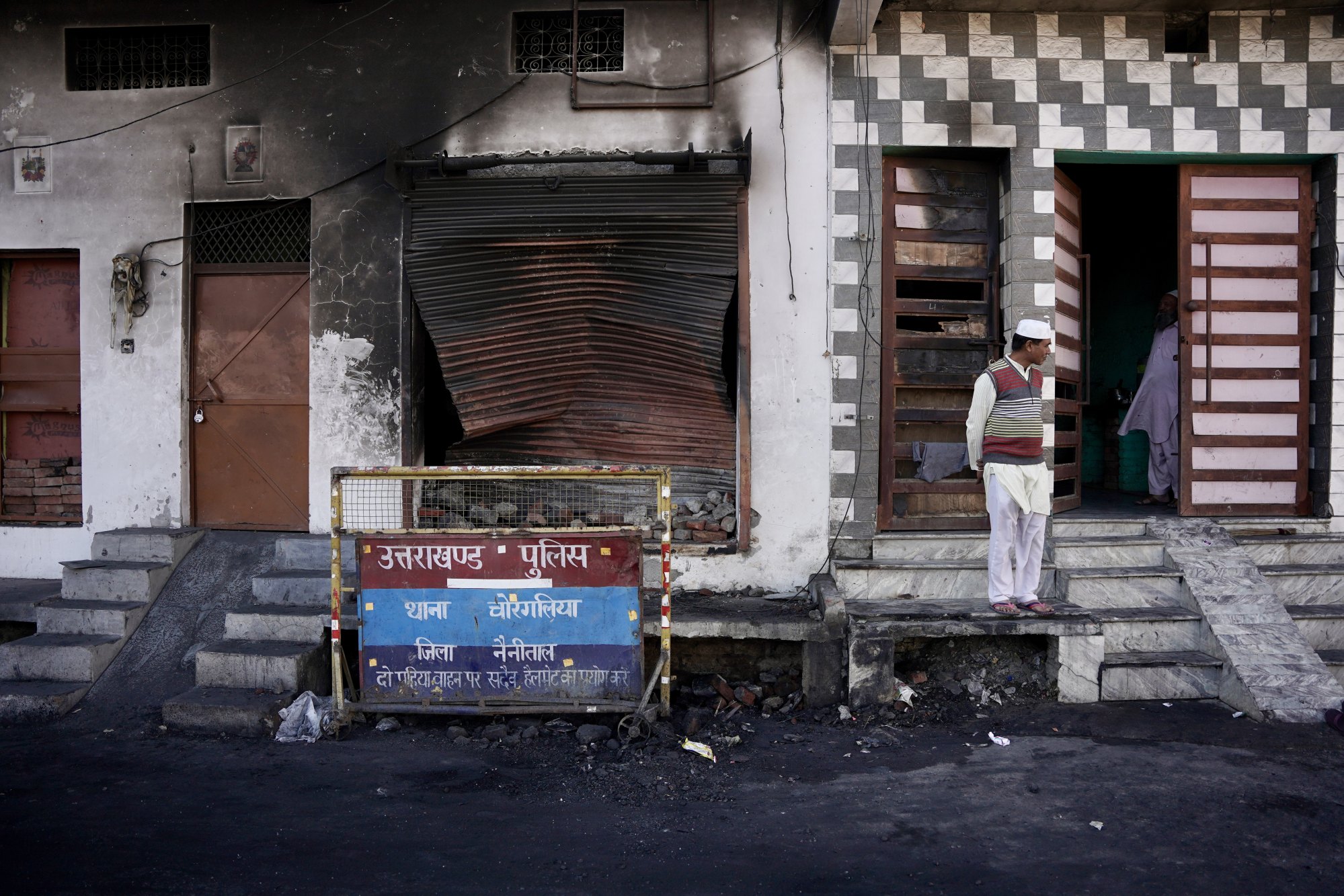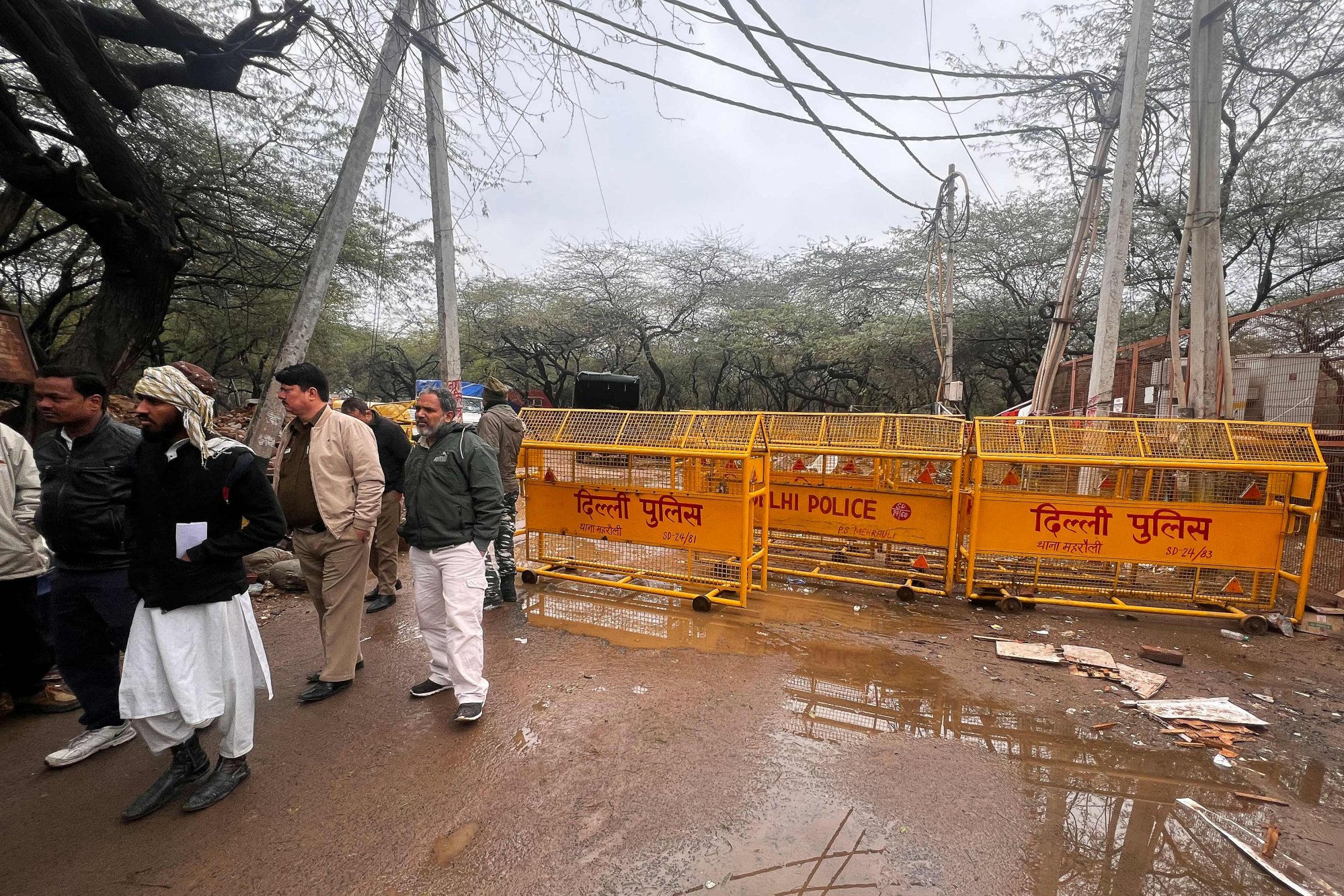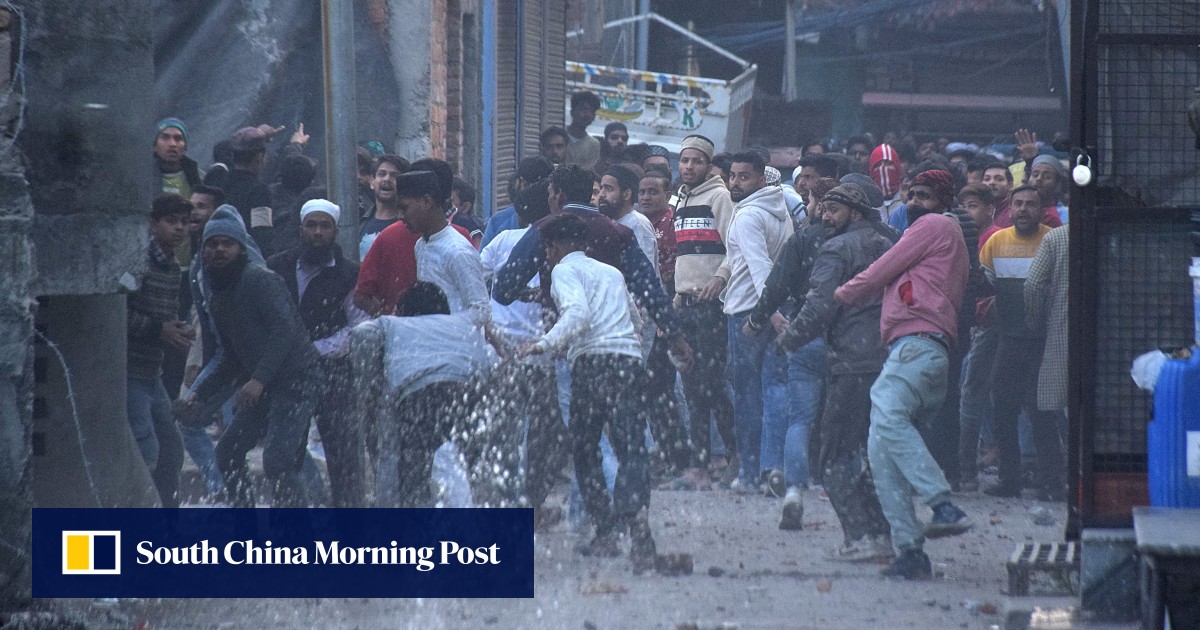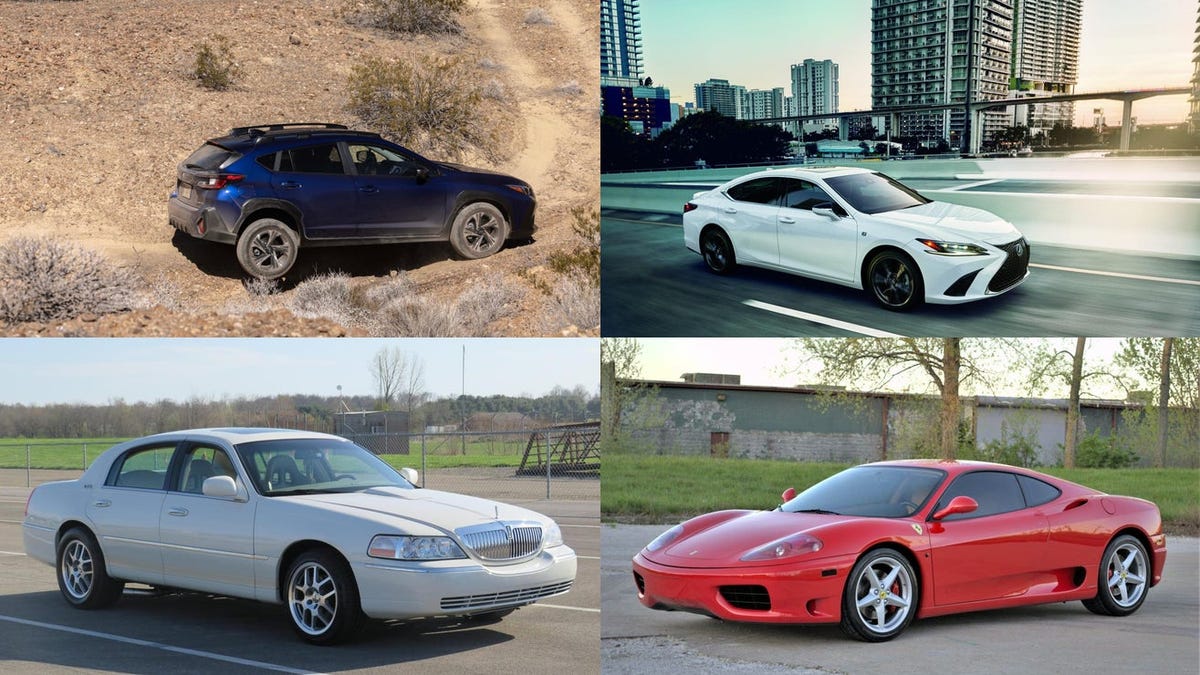Aman later learned his 16-year-old brother had also been shot, after he saw the youth lying in a pool of blood. “When I saw him, I lost my mind completely,” Aman recalled of both deaths in his family.
Haldwani authorities had issued shoot-on-sight orders, imposed a curfew, and suspended internet services as the violence boiled.
The next morning, both Anas and Zahid were taken to the government hospital for a postmortem, after which they were buried in the presence of only five family members, as per the police directive.
Aman’s dead family members are among six people who were reportedly killed in the clashes. According to officials, more than 300 people, including 150 police personnel, suffered injuries in the violence. More than 70 vehicles and a police station were also set on fire.
Police said the properties worth Rs 2.44 crore (US$294,420) had been destroyed.
During the Ayodhya temple consecration on January 22, at least six places in India witnessed clashes, including in metropolitan cities such as New Delhi and Mumbai.
Harsh Mander, an internationally acclaimed human rights activist, described Haldwani as a reflection of the situation faced by Muslims in India.
“Is this the template of how we are going from state to state? Initially peaceful, Haldwani became polarised due to encouragement from the state administration, leading to increased violence and communal divisions. So it is important to understand what has happened in Haldwani,” he warned.
‘Communal riots’
When the administration was demolishing the mosque in Haldwani, locals accused the Hindu community from a nearby Valmiki Basti of celebrating the action by chanting Jai Shri Ram (Glory to Lord Ram).
Faeem Qureshi, 30, was allegedly killed by his own neighbours outside his home in Gandhinagar.
“They [Valmiki Hindus] torched my brother’s house along with his vehicles. When he came downstairs to stop the mob, he was shot dead,” Javed, Qureshi’s brother, alleged.
Locals said the attackers were shouting Hindu slogans, and hurling abuses against Muslims.
Vandana Singh, the district magistrate of Nainital, said the Haldwani violence was not communal in nature. “I request everybody to not make it communal or sensitive,” she urged.

The administration said the mosque and madrasa were “illegal”, built on “nazul” (revenue) land where the lease had expired, and the occupants did not have freehold rights. Residents, however, said the mosque and the school, which were built in 2002, were unfairly targeted, especially since a court hearing on the matter was scheduled for February 14.
Two days after the riots, Nainital SSP Prahlad Narayan Meena told the media police had registered a case against 19 named and 5,000 unidentified people.
A deputy superintendent of police, speaking on condition of anonymity to This Week in Asia as they were not authorised to talk to the media, described the violence as a “man-made disaster”, adding that “the damage has been done. It is unfortunate that people have lost their lives. However, peace has returned, and we are consistently monitoring the situation 24-7”.
According to the police statement, 74 people including the alleged masterminds of the riot had been arrested so far, while nine properties were attacked in connection with the incident.

‘Police vandalising homes’
Locals are accusing the police of targeting Muslims, detaining and torturing them and ransacking and vandalising their houses during crackdowns.
Mohammad Kaif, 17, was at home in Nayi Basti when police forcibly entered his modest one-storey house and beat him “ruthlessly with batons”, he said, sporting a broken arm and visible injuries on his face. It was only after Kaif’s mother, Rehaana, pleaded with the officers that her son was left alone.
However, Rehaana’s neighbours weren’t so lucky. Firdousa Mikrani said her husband, a vegetable hawker, was arrested from the street when he left home to stay at his relative’s house.
As the city slowly returned to normalcy, an uneasiness still lingered. The smell of burning was still in the air, and black ashes from vehicles and shops were visible on the ground.

Abid Siddique, 30, who rescued a policewoman from the clutches of an unruly mob during the violence, said he was yet to overcome the trauma of February 8-9.
“I saw a female police officer getting beaten up mercilessly. So, I jumped into the crowd and somehow dragged her out and brought her home,” Siddique said.
Siddique kept the policewoman at his home until a backup arrived to rescue her. However, instead of being appreciated for his efforts, Siddique alleged that the next day police damaged his house as well.
A police officer stationed at the site of the demolished mosque said they were reviewing the CCTV footage and people identified in the riots would be arrested accordingly.
In India, viral pro-BJP posts telling Hindus to beware ‘evil’ Muslims run rife
In India, viral pro-BJP posts telling Hindus to beware ‘evil’ Muslims run rife
A fact-finding team who visited Haldwani last week claimed “that large numbers of young men, some women, and juveniles are beaten, detained, and taken to unreported locations for interrogation”.
Titled “Bulldozing Peace: State Violence and Apathy in Muslim Settlements of Haldwani”, the fact-finding report – prepared by the Association For Protection of Civil Rights in association with Karawan-e-Mohabbat and other rights activists – alleged that Haldwani was not sudden but an outcome of a steady rise in communal tempers in the state of Uttarakhand over recent years.
“The state government led by the Chief Minister Pushkar Dhami and radical right-wing citizen groups have together contributed to a highly polarising narrative with many disturbing elements,” the report said.

‘Erasing Muslim symbols’
On January 31, a 600-year-old Akhoondji mosque in Mehrauli located in India’s national capital was demolished in the wee hours. Delhi Development Authority alleged that the historical mosque constructed before 1200 A.D. was standing on encroached land.
“If a structure has stood for 600 years, it suggests that the city has grown around the mosque, rather than the mosque encroaching on the city,” said Zakir Hussain, the Imam of the mosque.
Authorities demolished five revered shrines in the heart of Delhi last year, including Dargah Sunehri Baba and Dargah Hazrat Qutb Shah Chisti, located outside the headquarters of the Election Commission of India on Ashoka Road.
In recent times, the state of Uttar Pradesh, governed by the BJP, also witnessed a number of demolitions of mosques and shrines.
Shahi mosque in Prayagraj city and a 300-year-old mosque in Muzaffarnagar were razed to the ground, as local authorities termed them illegal.

Apoorvanand, a professor in the Hindi department at Delhi University who prefers to be known only by his first name, told This Week in Asia that by making India appear as a Hindu-only country, the government was erasing Muslim symbols in the states.
“When we talk about genocide, one of the most crucial elements of it is cultural elimination. You see in Gaza, where Israel is destroying all archaeological monuments and buildings which have historical importance to erase historical memory of the Palestinian community, similarly this has been the project of the RSS in India,” he said.
Apoorvanand said RSS, a right-wing organisation, wanted India to be seen as a “Hindu-only country” and destroying Islamic structures served a dual purpose for the government: it allowed the erasure of Muslim history without the need for bloodshed.
“You are destroying shrines and mosques on the pretext of being illegal, symbols of invaders, and the courts are also looking other way as no life is lost. So you achieve two things: you destroy the self-esteem of the community and make it powerless without killing them,” he said, adding that this was an effective way of disenfranchisement of the community.








